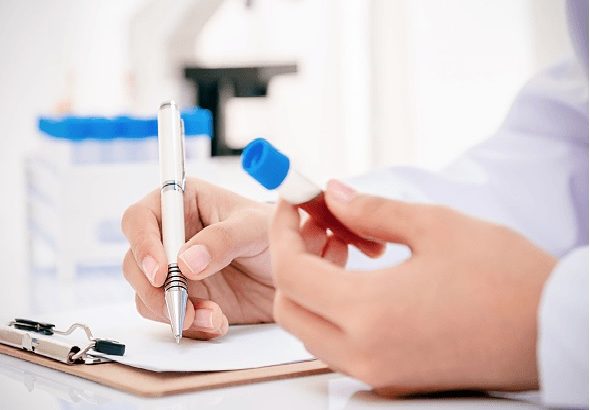We all know that, if you want a proper diagnosis, a hospital is the first place you should go. General practitioners may diagnose certain things–such as pregnancies, or fractures–but if you want a detailed description of what’s going on in your body, you need to go to a hospital. That’s why it’s so important for hospitals to offer as many methods of diagnosis as possible.
Some issues will only show up on certain tests, meaning they can be missed if a patient is tested using a unique method. Then, of course, there’s the fact that not all people can undergo all tests. For example, a pregnant woman may not have x-rays taken, so it’s important to have alternatives. We’ve compiled a list of nine services that hospitals should be able to offer their patients to help diagnose them and hopefully set them on the path to recovery.
Saliva tests
For many people, saliva testing is their preferred method of testing–it’s quick, and often cheaper than other methods. Of course, this is also the preferred method for people who have a fear of needles. While this method isn’t the most pleasant experience, it rarely causes pain, and it’s over before the patient fully realizes what’s going on. Saliva tests have become even more popular because of Covid-19, so it’s a good idea for hospitals to stock up on saliva collection kits.
Blood tests
Another popular method of diagnosis is blood tests. Blood tests are ideal as you can use them to test for and diagnose a variety of things. They often show smaller irregularities that other tests don’t pick up on, so it’s a good option if it seems like a patient has undergone many tests with no clear sign of what’s causing their problems. Some hospitals only draw blood on their premises, and then send it off to a separate laboratory to get tested, but it’s a smart move to have an internal laboratory within the building to yield faster results.
Doctors
A hospital can’t function without doctors. Surgeons often are the most respected doctors in a hospital, and no one is denying that they play a crucial role, but it’s also true that other experts are just as essential for a hospital, and especially for diagnosing patients. If someone is an expert in a specific field, they will probably be able to diagnose someone; or at least know where to start. Click here for a complete list of doctor specialties.
X-rays
People often think that x-rays are only used for bone fractures. While it’s true that this is the most common method of confirming whether a bone has been broken, there’s so much more that can be done by using x-rays. Aside from just looking at whether a bone is broken, x-rays can tell you other details, such as if someone has weak bones with a low bone density. X-rays can also be helpful for diagnosing other internal problems. They should be used with caution, though–as mentioned, pregnant women and people with certain health problems may not be viable candidates for x-rays.
CT scans
CT scans–or computerized tomography–are scans that show much more details than x-rays. They show different angles of a specific body part, and they also show different levels. This means that they create a 3D image rather than the 2D image that x-rays offer. Aside from showing any issues that may be related to a patient’s bones, CT scans also show soft tissue, so it is possible to see information that is hidden with x-rays.
MRI scans
People are quite familiar with MRI scans, often because of watching medical dramas. But if you had to ask them what it stands for, they wouldn’t know where to start. MRI stands for magnetic resonance imaging. MRI scans go a step further than CT scans–they focus on things like brain and spinal injuries, and can also diagnose tumors. Once again, people often get confused with the difference between x-rays, CT scans, and MRI scans. For a more detailed breakdown of the difference between the three, you can read this article.
Urine tests
Urine tests are another method of diagnosis that tends to be preferred by patients–it’s non invasive, pain-free, and quick. An added benefit is that, depending on what the test is for, results can be gained within a matter of minutes. For example, if the test is for something standard like a bladder infection, a stick of paper will be inserted into the urine and change color depending on whether something is wrong or not. Urine tests also tend to be the most common option for testing for drugs–although, keep in mind that not all drugs will show up.
Biopsies
Biopsies need to be taken when a doctor needs to check whether something is benign (harm-free) or harmful. They require taking a sample of tissue from a patient’s body so that it can be examined. Tests are often run on this sample to see whether it can potentially cause harm to the patient. There are various types of biopsies–doctors may take samples from various parts of the body, depending on what they suspect may be wrong. Usually, doctors will try to apply something to numb the pain.
Testing stations for vitals
This is, strictly, something that all hospitals should have, and most of them do. However, most hospitals don’t have nearly enough machines to test for vitals. In the hospital world, the word “vitals” refers to our bodies’ normal functions and how they are functioning. Things like heart rate, blood pressure, and oxygen levels are all included under this umbrella term. While testing for vitals won’t offer a complete diagnosis, it can often guide healthcare practitioners towards the next steps they should take to help get a clearer diagnosis.






